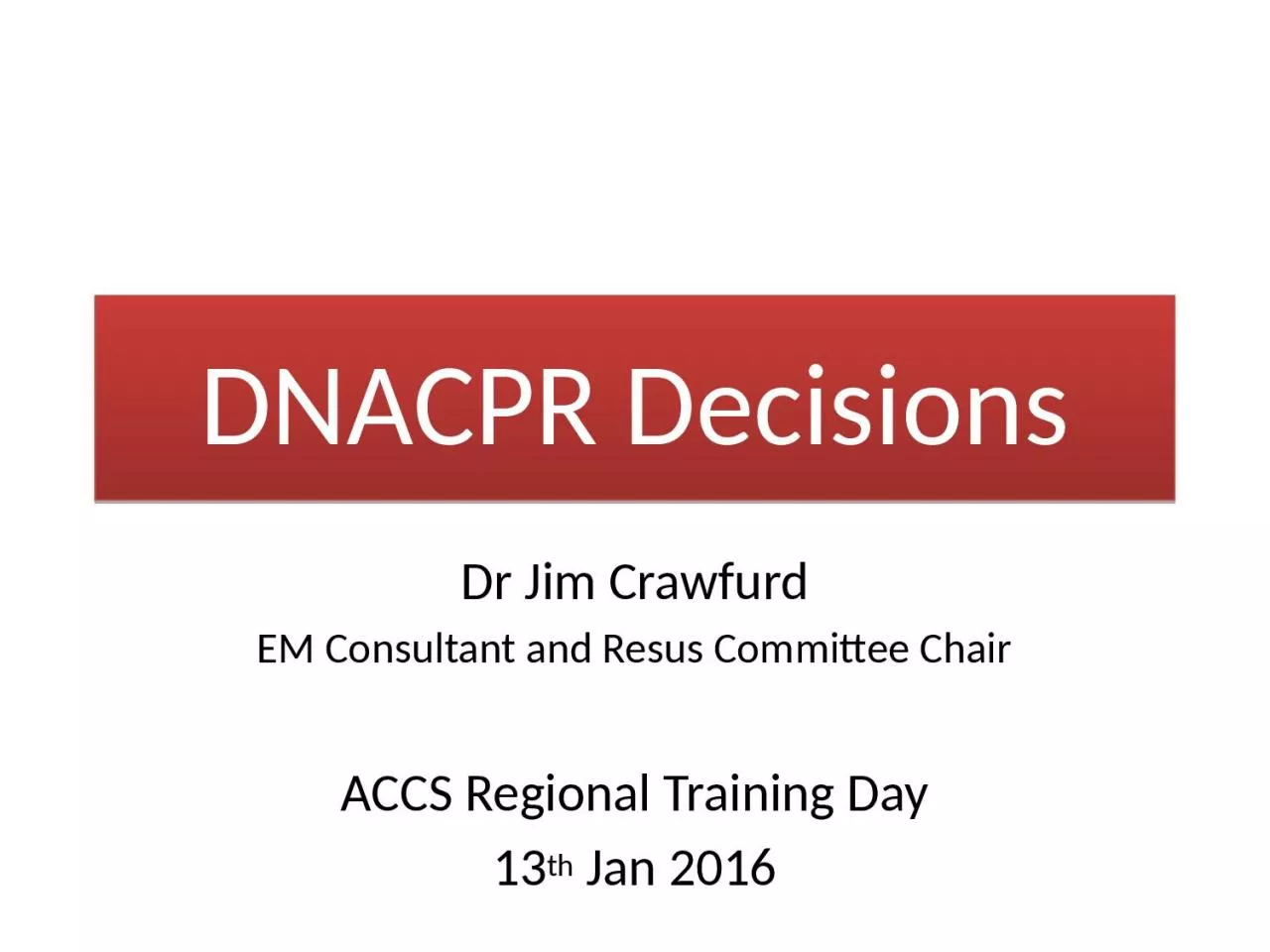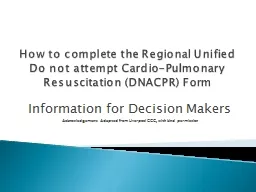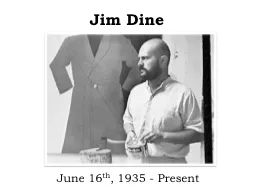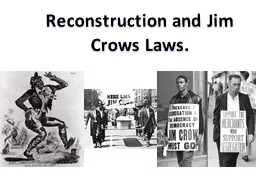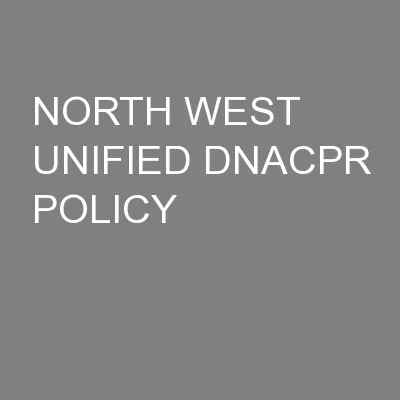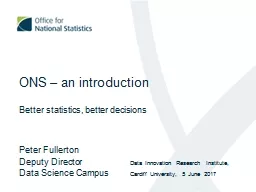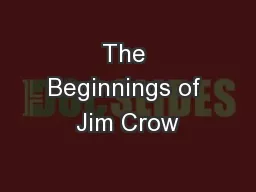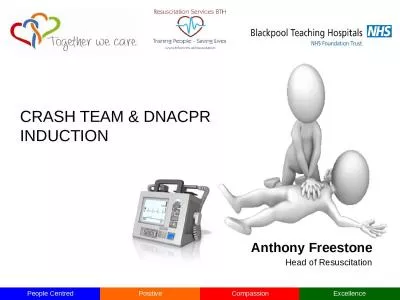PPT-DNACPR Decisions Dr Jim
Author : fiona | Published Date : 2024-02-09
Crawfurd EM Consultant and Resus Committee Chair ACCS Regional Training Day 13 th Jan 2016 How important is DNACPR Why Why is it so important to some patients and
Presentation Embed Code
Download Presentation
Download Presentation The PPT/PDF document "DNACPR Decisions Dr Jim" is the property of its rightful owner. Permission is granted to download and print the materials on this website for personal, non-commercial use only, and to display it on your personal computer provided you do not modify the materials and that you retain all copyright notices contained in the materials. By downloading content from our website, you accept the terms of this agreement.
DNACPR Decisions Dr Jim: Transcript
Download Rules Of Document
"DNACPR Decisions Dr Jim"The content belongs to its owner. You may download and print it for personal use, without modification, and keep all copyright notices. By downloading, you agree to these terms.
Related Documents

